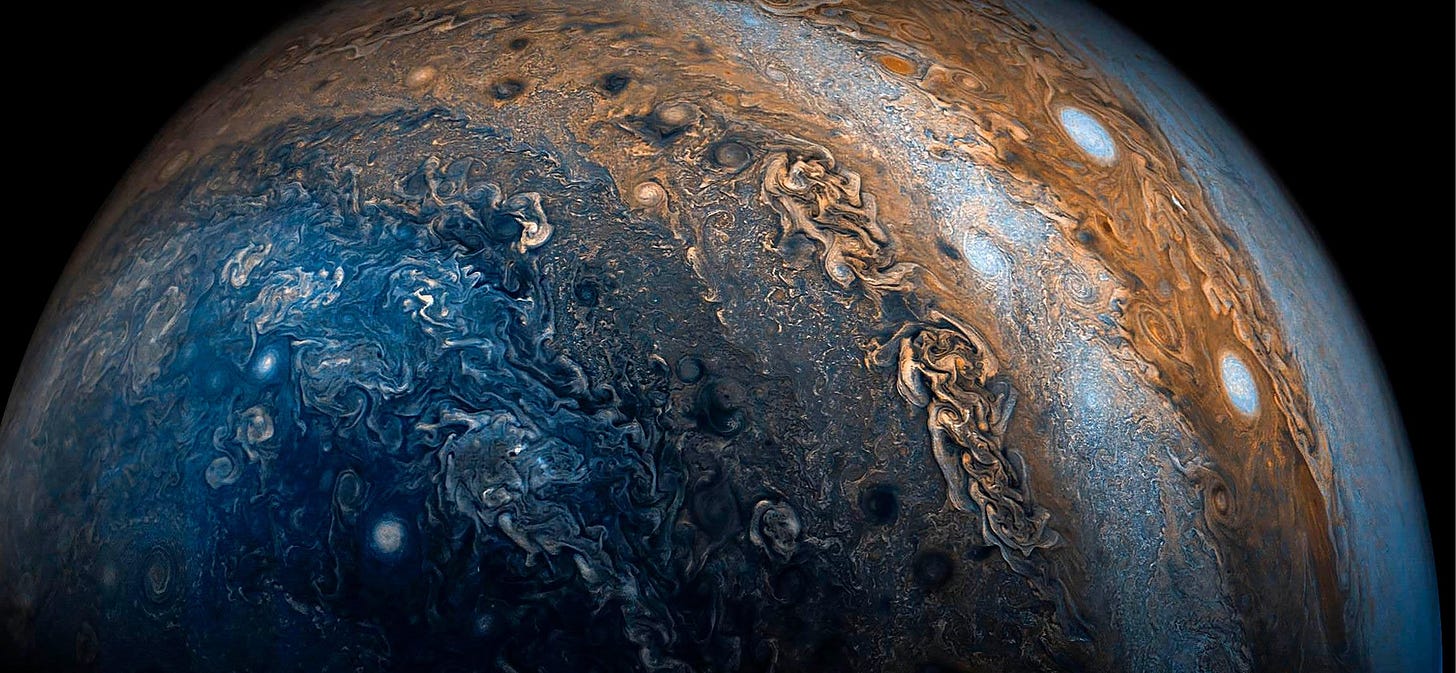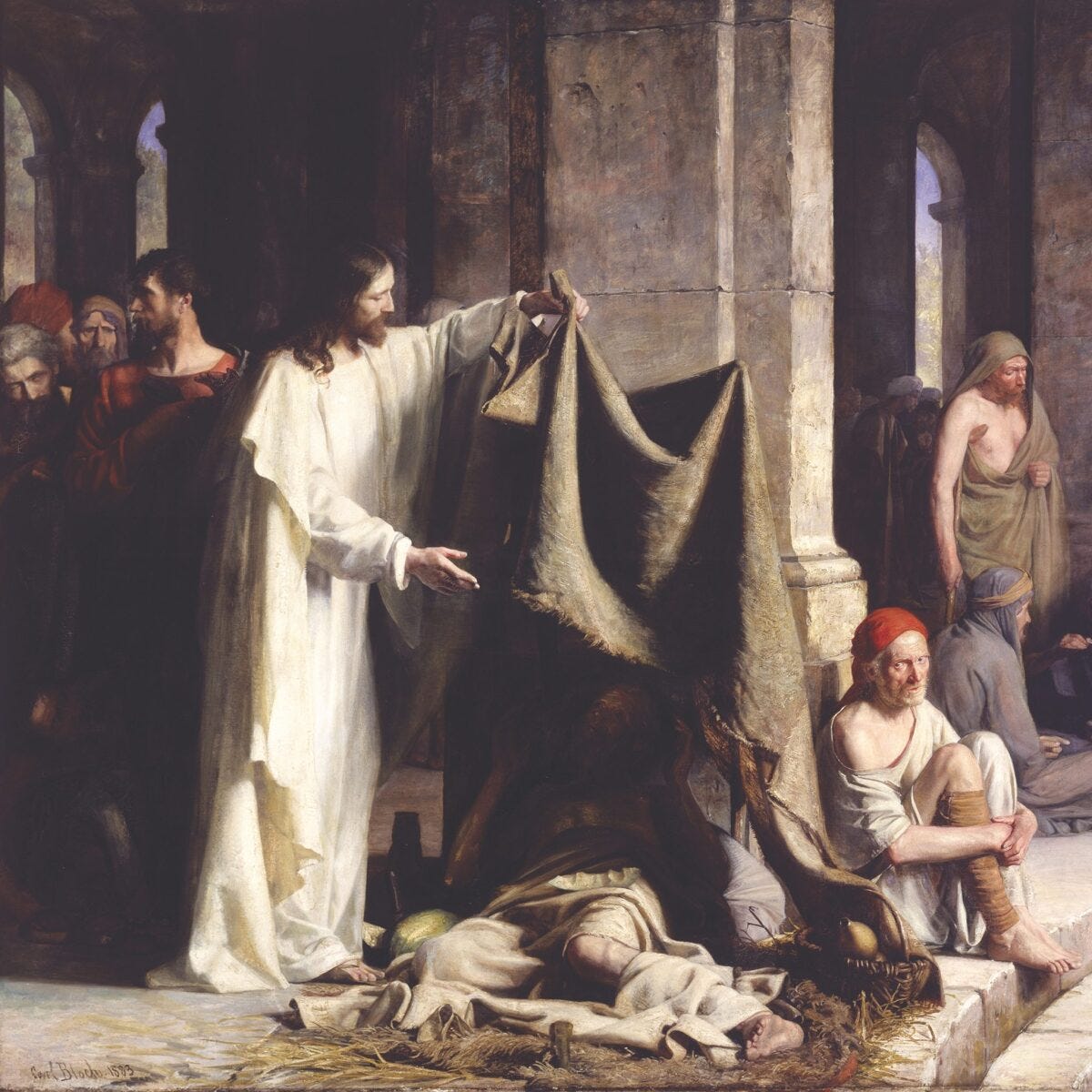The Three & Three Days of Creation
The Symmetrical and Celestial Patterning Hidden in Genesis 1
I wrote previously about my mnemonic device for the days of creation. In the interest of caution, I stressed that it was just a mnemonic device that I had created to memorize the first chapter of Genesis, but I had a suspicion there was more to it and it actually looks like there is.
For anyone who didn’t read the last post, I used the traditional planetary correspondences for the standard week:
Sunday / Sun: Light.
Monday / Moon: Division of the Upper and Lower Waters.
Tuesday / Mars: Dry Land and Seed-Bearing Plants.
Wednesday / Mercury: Stars and Planets for Signs.
Thursday / Jupiter: Birds and Fish.
Friday / Venus: Humanity, Animals and Eden.
Saturday / Saturn: Rest.
Some of these seemed to fit very well — so well in fact that it looked intentional: light with the sun, waters with the moon, mercury with “signs” (the Hebrew name for Mercury is actually “the star/planet” so this one fits especially well).
The other three though (however intuitive to me) seemed somewhat arbitrary from a more objective standpoint and I just couldn’t explain them in a way that “clicked.”
These are Tuesday, Thursday and Friday. It felt like they fit, but that’s subjective and I wasn’t confident I could persuasively defend the connections. So I said:
It’s just my mnemonic device, don’t take it too seriously.
Upon closer inspection though, it looks like it isn’t “just my mnemonic device.”
It turns out the name “Adam” actually has very strong Martian connotations. The word adom means “ruddy” or “red” and can mean to flush or turn rosy. Adamah means “ground” or “earth” and dam means “blood.”
If you look at the Hebrew name of the planet Mars: Ma’adim, “the red one,” you’ll see the root is right there. It seems unlikely this connection would have been missed by native Hebrew speakers.
When we consider that Adam comes out of the dust (ground) and is cursed to work the fields (seeds and plants), the Mars connection hits the nail right on the head.
Jupiter, in Hebrew, is called “Tsedeq.” This word is translated as “righteousness” but the idea is more complex in Hebrew. It is the attribute of a good king — a proper mediator of Heaven and Earth, or “above” (birds/angels/patterns) and “below” (fish/bodies/matter).
So what about Venus? Well, if you look at what’s going on in Genesis 1, you’ll start to see an interesting rhythm that I’ve never seen anyone point out:
Heaven, Heaven & Earth, Earth.
You see it in days 1-3 and days 4-6. It’s recursive. The first three days are a blurry, abstract, heavenly cycle. They provide a general outline. The second three days are clearer and the creations on those days are things that move — celestial bodies and animate beings. It’s a more concrete earthly cycle that literally “fleshes things out.”
We see then that Mars (Adam) and Venus (Eve) complement one another. The day of Mars is the culmination of the initial “heavenly” cycle and the day of Venus is the culmination of the second “earthly” cycle.
To my astonishment, this reading was confirmed in advance by Jesus Christ himself.
When they arrived at Bethsaida, some people brought a blind man and begged Jesus to touch him.
So He took the blind man by the hand and led him out of the village. Then He spit on the man’s eyes and placed His hands on him. “Can you see anything?” He asked.
The man looked up and said, “I can see the people, but they look like trees walking around.”
Once again Jesus placed His hands on the man’s eyes, and when he opened them his sight was restored, and he could see everything clearly.
These are odd details. Why does he have to touch the man’s eyes twice before he’s fully healed? Why does the man see trees the first time?
This miracle is designed to mirror the two-cycle creation. The blurry first cycle ends with plants and trees. The clearer second one ends with humans and greater detail.
These twin rhythms cosmically parallel Eve coming out of Adam’s side, as well as the reproductive roles of men and women: the man provides a pattern, the woman gives it form and life — she animates it.
It is also why in Genesis 2, the ground is initially without vegetation. It is just dry soil (adamah) and presumably, seed. Then God makes rain and streams to make the Earth bloom (note that Eve means “life”).
A similar pattern appears afterward with Cain the agricultural first-born (Mars/plants) and Abel the second-born shepherd (Venus/animals). Although Cain and Abel are more complex characters and the Heaven/Earth mapping is not one-to-one like it is with their parents.
It’s hard to tell for sure whether this was put in here knowingly or unknowingly. It looks intentional, but it would be intentional either way. In any case it’s fascinating that it’s here. Hopefully this has shed some light on the days of creation and helped to clarify their meaning.
Thank you for reading.






I know you're not a huge fan of reading but I would highly recommend making an exception for "The Language of Creation" by Mathieu Pageau, it takes this heaven/earth principle and goes into a lot more detail
Just found your YouTube last night and now your substack. I began reading Jung a few months ago, and my entire perspective has been gradually shifting ever since.
Excellent work man, keep it up👍